BURST CITY (1982)
Punk rock gangs and music groups clash with one another and the brutal police force in a futuristic Tokyo setting.
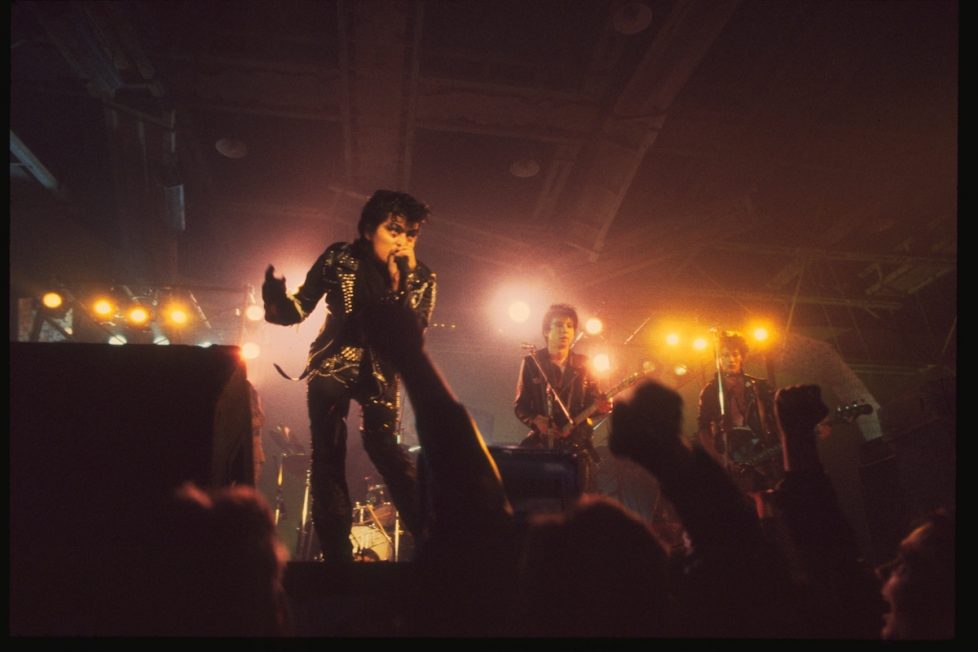
Punk rock gangs and music groups clash with one another and the brutal police force in a futuristic Tokyo setting.


Restorations and re-releases are ‘in’ right now. But there’s always going to be the contrarian who swears by their flea-market VHS copy. Companies like Arrow Video lovingly clean scratches and hairs out of negatives like nurturing a sick animal back to health, and yet people argue that “fixing” this degradation removes an important element. A filter of nostalgia ingrained onto the film. Arrow hasn’t lessened the impact of Burst City (爆裂都市 BURST CITY, Bakuretsu Toshi Bāsuto Shiti), as restoring Sōgo Ishii’s cyberpunk cinematic experiment is like trying to cleanse the radiation out of the Elephant’s Foot photo from Chernobyl.
Quoting the official press release: “In a derelict industrial wasteland somewhere on the outskirts of Tokyo, two rival punk bands and their unruly mobs of fans gather for a Battle of the Bands-style protest against the construction of a nuclear power plant, bringing them head to head with the yakuza industrialists behind the development of their turf.” Burst City is both less, and more, complicated than that.
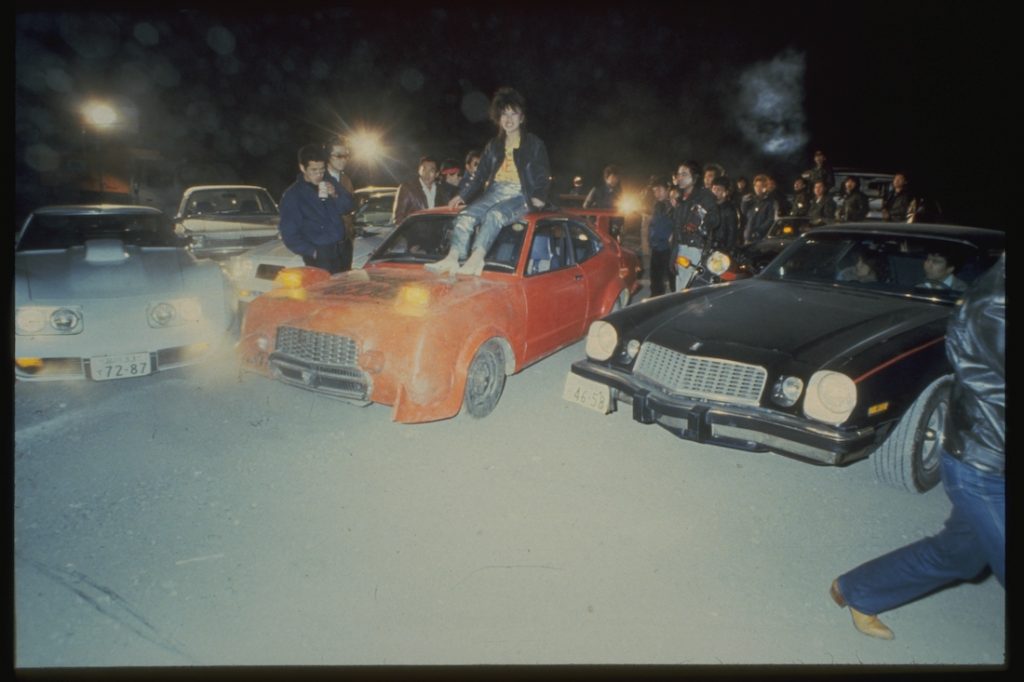
Punk across the world promised youths disenchanted by antiquated rigours of past generations that change is possible if you grab it by the balls. Japan has always suffered a ‘delinquency’ issue. Some regard even the criminal Yakuza more reputable than their own slacker kids because of this shared authoritarian view. This was challenged by bands like The Roosters, The Rockers, and The Stalin—who were reinforcing a subculture that couldn’t be disciplined into compliance. These three bands would then star, loosely as themselves, in Burst City, leading the volatile revolt.
We’re eased into an energetic documentary-like style; a live performance followed by a music video of sorts that devolves into something else entirely. Amid the merry band members singing and dancing are knife-wielding maniacs, gas-masked fire jugglers, and legless amputees crawling through the rubble of this post-apocalyptic scene. Burst City starts as Stop Making Sense, mutates into Eraserhead (1977), and somehow ends in the war-zone of a Star Wars (1977) finale.
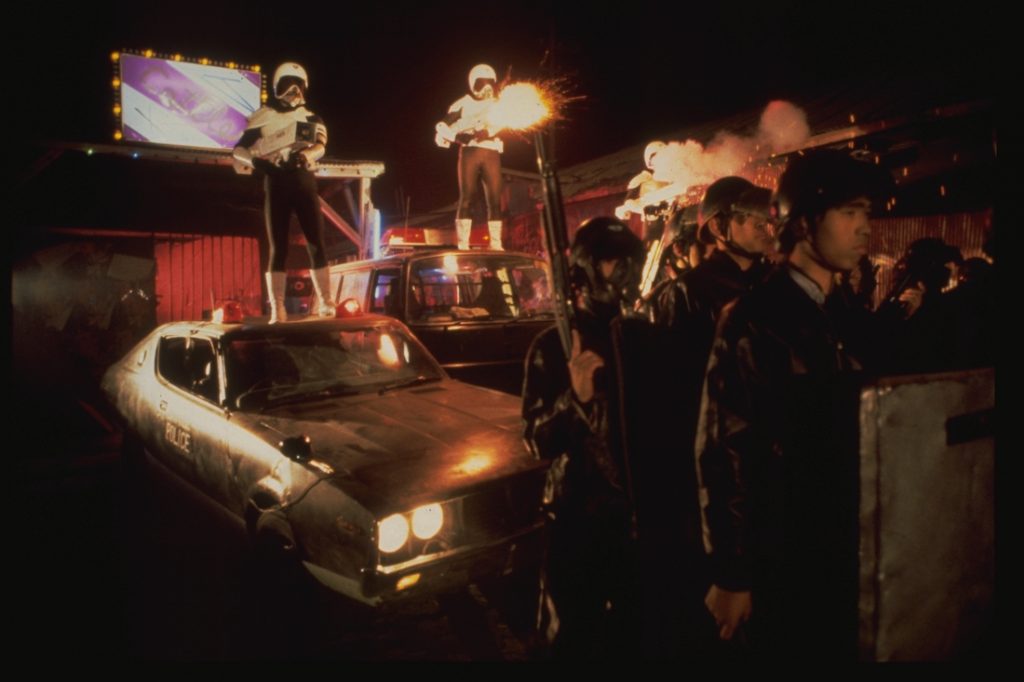
Three ‘narratives’ run concurrently in the city; the punk-rockers and their concerts, the tribal day labourers volunteering to construct the power plant but then resisting the abusive Yakuza, and the catalyst of both rebellions in Mad Max-style biker warriors. Complete with patchwork iron armour and a war-axe, these two ride into town like mythical cowboys communicating only in action and screaming.
Swinging from musical performance to dialogue there are just as many tonal shifts. From a drag racer climbing out the wreckage to breathe a sigh of relief that “at least [his] sunglasses are okay” to darker sequences like a prostitute and pimp reluctantly serving the Yakuza for money to escape. Blistering intercutting between events is at first delirious but a sense of story coalesces by the climax—a truly epic Lord of the Rings (2001-03) Extended Edition scale riot. Seriously, the last maybe 40-minutes is all-out war, you really do see the city burst.
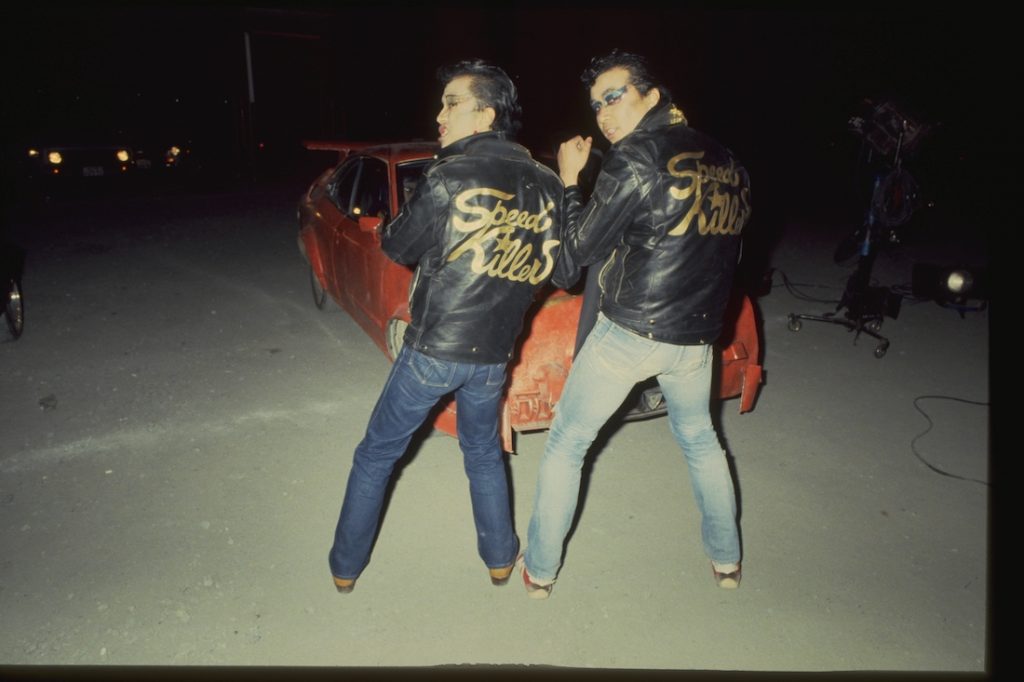
All this wrangled by a 25-year-old director still in education. (Ishii delayed graduation solely to keep using their equipment and was eventually kicked out). To become an assistant director in Japan at the time, the few big companies would issue actual exams, and one was only considered a professional director in their later years after decades of experience. Ishii was not a grade-A student and felt dispirited that the path ahead of him was all but barred… until the advancements of 16mm came and he declared tradition be damned, he was going to make movies himself.
Dangerous motorcycle stunts, live performances, and a roving cast of hundreds every day all living inside a ramshackle village built for the film. Ishii was a fearless amateur gifted a rare chance by the system and here he was leading an incredible ecosystem of provocative chaos. Even in the ‘ordinary’ sequences with the bands playing, Ishii not only films from within the moshing crowd but violently shakes us around; he doesn’t want us as voyeurs but active participants.
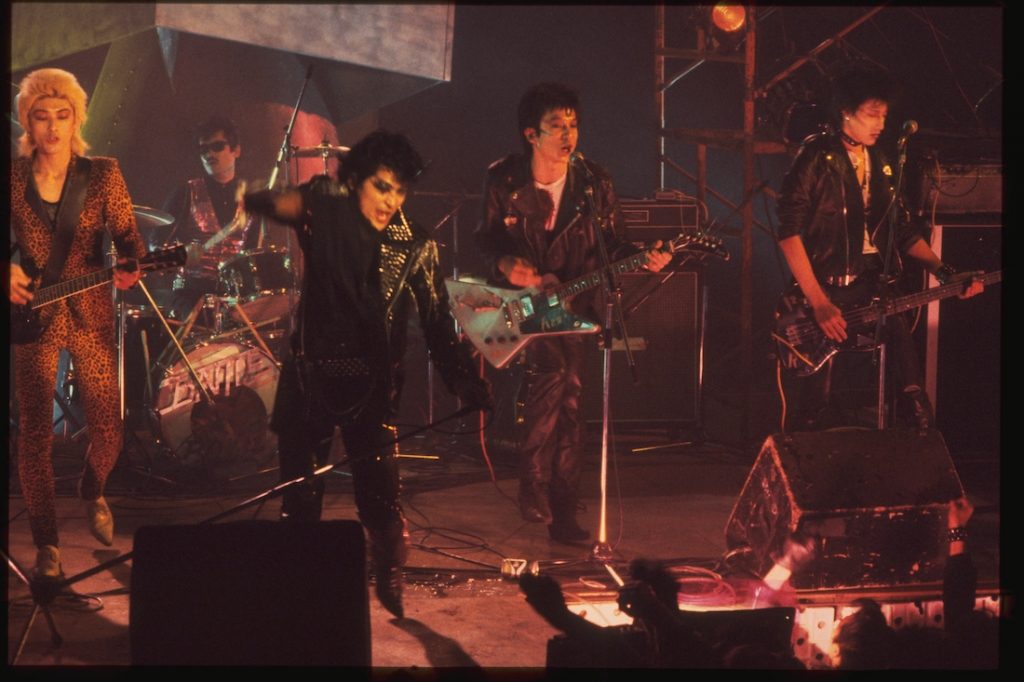
Between the frequently under-cranked cinematography and urgent editing around a 60% finished shoot, Yoshiharu Tezuka (interviewed in the special features) was the lighting and camera technician and goes as far to admit “if it’s too dark and you can’t see what’s happening then blame me.”
This release aims to deliver that explosive power as intended. Perhaps it’s closer to restoring the Ringu (1998) tape and empowering the curse embedded within. Burst City isn’t cursed but Ishii sought to capture the incendiary essence of punk onto celluloid; not with the intentions of crafting a sensical narrative but a living artefact that could deliver his most primal emotions from an era of music and culture directly into the viewer.
One may argue this film’s an incoherent mess for an experimental relic, but I found grand ‘Biblical’ tales being told here. A punk who truly lives by the lyrics he belts out to the fans turned army, the once lowly labourer screaming the chorus of grievances against the upper-class, and the post-apocalyptic knights riding into the night in search of another just cause. Burst City is a deep, guttural scream and the reverberations are still being heard decades later through Japanese cinema.
JAPAN | 1982 | 115 MINUTES | COLOUR | JAPANESE

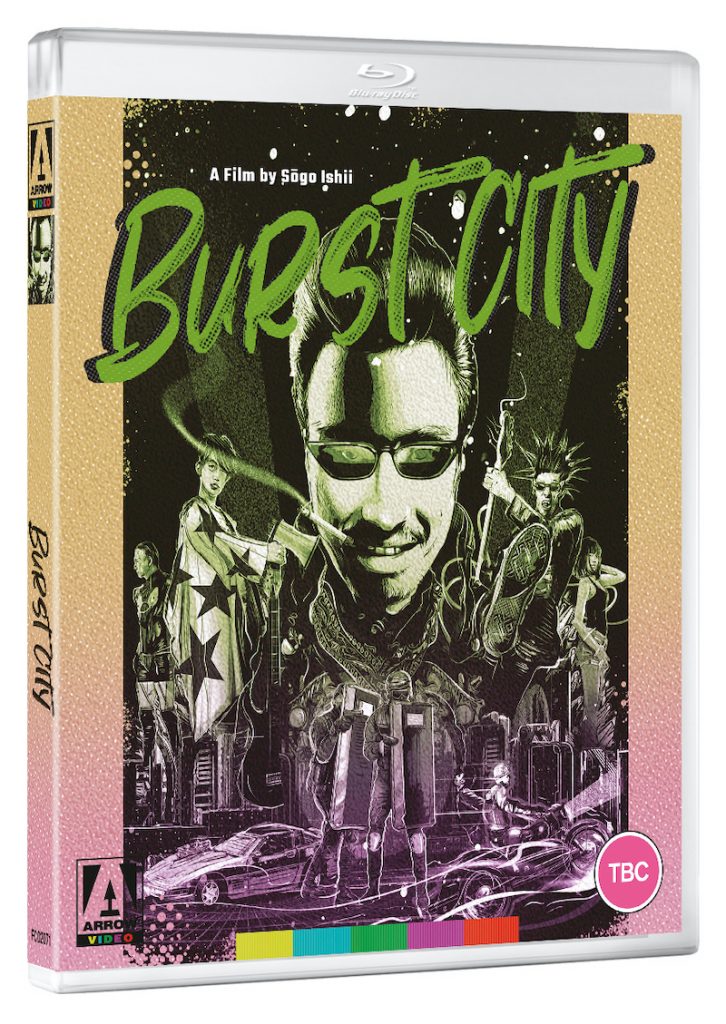

director: Sogo Ishii.
writers: Sogo Ishii & Mitsuhiko Akita.
starring: Takanori Jinnai, Shinya Ohe, Tsui Tobu, Kō Machida & Shigeru Izumiya.
